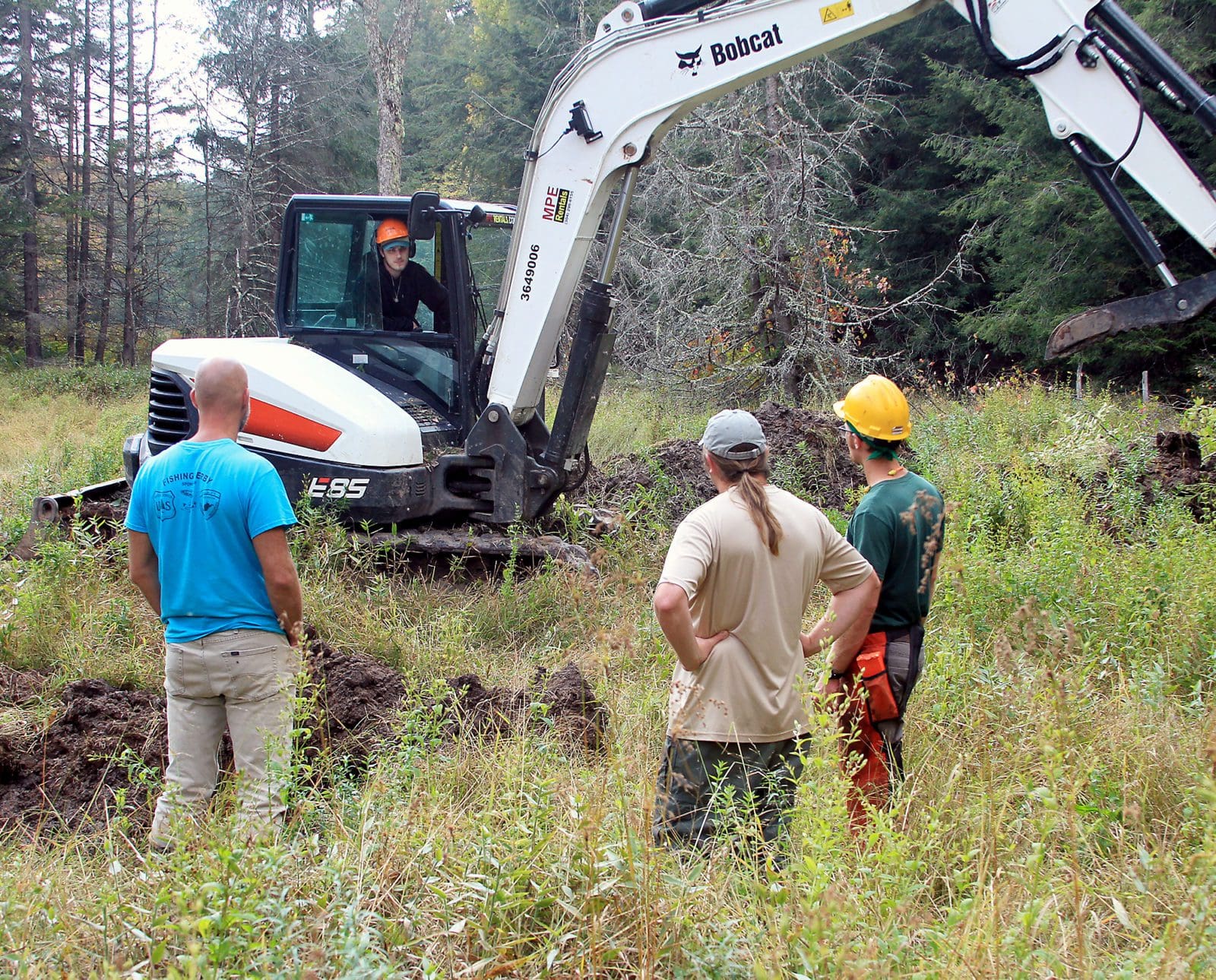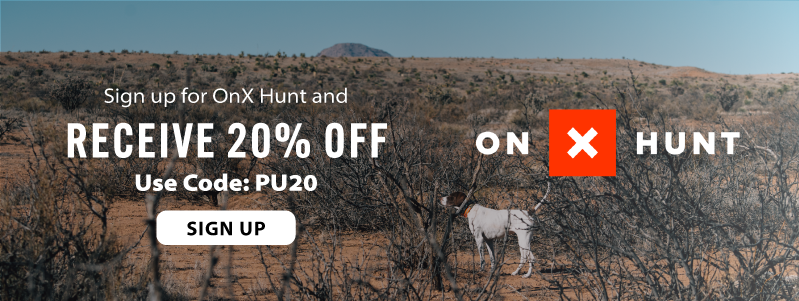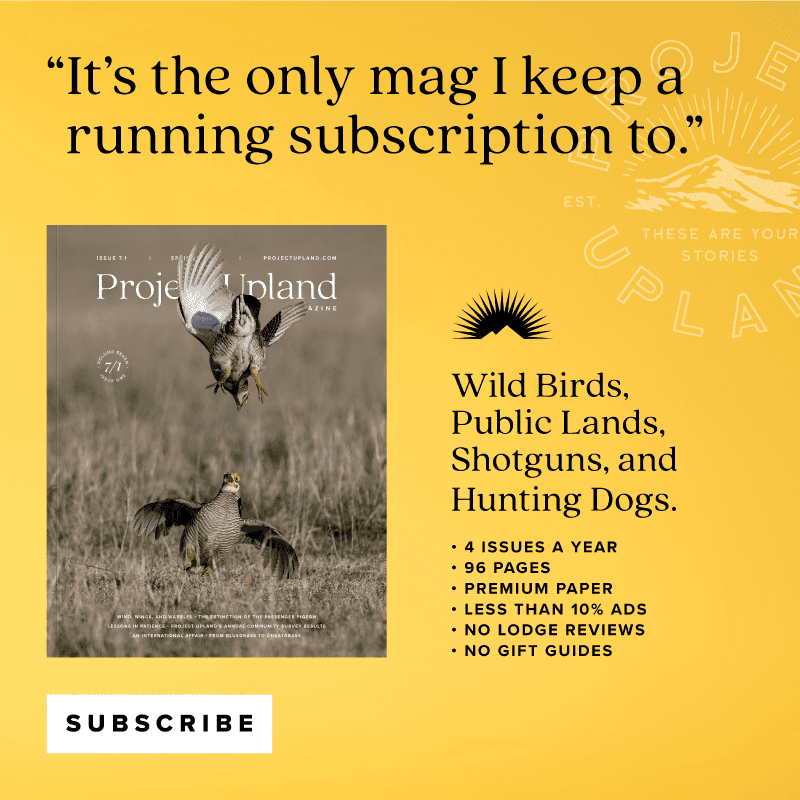Home » Conservation » The Future of Conservation: Interagency Partners Work in Tandem to Protect Multiple Species
The Future of Conservation: Interagency Partners Work in Tandem to Protect Multiple Species

Jacob Lam is currently a wildlife and fisheries student at…
In the mountains of West Virginia, three agencies are setting an example by joining forces to benefit upland birds and aquatic species
Chad Landress, a U.S. Forest Service fisheries biologist based in Elkins, West Virginia, and I descended a steep bank from F.R. 44 into a mix of bracken ferns, witch hazel, and maples. We were there to observe a large, inter-agency habitat project between the USFS, West Virginia Division of Natural Resources, and the Ruffed Grouse Society aimed at helping ruffed grouse, American woodcock, and different aquatic species.
There was the buzz of a chainsaw in the direction we were walking, and as we picked our way along a small stream and through the woods, it became more clear: the sound was coming from the saw of DNR wildlife biologist Vinnie Johnson. Johnson was most of the way through a medium-aged red maple when we arrived. Shortly after, Johnson’s tree fell, and Landress dropped more trees into a meadow directly adjacent to a stream. These trees would then either be intentionally left lying on the ground or strategically placed in the stream by an excavator.
All of this work is part of a greater project known as the Beulah Wildlife Enhancement Project, and the scene above is an example of critical work that benefits both wildlife and fish species.
What is interagency management and what does it accomplish?
Johnson was cutting trees into the meadow to create a “feathered” edge. This is a term used in wildlife management to describe a smooth transition between two habitats—in this case, a stream—side meadow and a forest. As a result, young forest species will grow in open areas created by fallen trees. Further, the species that grow in these open and transitional areas are often the trees that provide necessary food and shelter for grouse and woodcock. The biologists from the DNR and the Forest Service have also made plans to thin stands of hawthorn to improve their health and provide similar ecological benefits.
Additionally, many of the trees cut near the stream are placed in the stream to create habitat for native brook trout and aquatic insects. In the surrounding area, bulldozers are used to remove invasive species like autumn olive, which takes up space and energy that could be used by more beneficial plant species. Excavators also create depressions that will fill with water, known as vernal pools. Vernal pools slow water flow, control flooding, and provide valuable habitat for insects and amphibians. The edges of these pools will be planted with willow, aspen, and other wetland species, which will create feeding habitat for woodcock.
The beauty of this project can be seen in the broader strokes: the work done to create wildlife habitat also compliments and accentuates fish habitat. Yet, frequently, wildlife and fisheries management practices can be conflicting, but when managers focus on general ecosystem restoration, based on natural historic factors, great work can happen for both fish and wildlife species.
The final player in this project is RGS, but what is its role in this process?
The nonprofit’s work in this project occurs mostly in the ridges surrounding Beulah. RGS is working on a stewardship agreement with the USFS, which will allow them to act as an advisor to set up timber harvests in a way that will benefit ruffed grouse. Ben Larson, the forest conservation director for RGS for the mid-Atlantic, says these types of stewardship agreements, “allow the Forest Service to do more work by essentially gaining staff capacity with partners.”
Why interagency management partnerships are critical for multiple species
Without this partnership, less grouse and woodcock habitat would be created. Some of the timber practices used along the stream will also be used in upland areas for grouse. Most of the cuts will be even-aged, which means nearly all the trees in that given section will be harvested.
Surrounding those even-aged cuts, the edge of the mature forest will be thinned to create the feathered edges, like the areas bordering the stream. Again, this will create more diverse, long-lasting beneficial effects for grouse, whitetail deer, Eastern wild turkeys, and many songbirds.
Still, it is important to understand the history of the area to know why this kind of work is necessary.
In the early 1900s, almost the entire area that is now the Monongahela National Forest was clear-cut. This cutting was not the heavily managed and thought-through harvest that occurs on National Forest lands today, however. It was a wholesale decimation of a great wilderness. As a result, rivers filled with sediment, and fires scorched the soil down to rock; the huge expanses of spruce never came back, and brook trout the size of a forearm will never be common again. In his book “The Last Forest,” Pocahontas County, West Virginia, native, G.D. McNeill describes it like this:
“Where, in other days, the boys had seen blue waves of spruce and hemlock, stretching away mile upon mile, the men now behold desolation—bare hills, ribbed with shale, from which fire and erosion had swept every vestige of soil: long mountain ranges without a tree, save here and there a gnarled trunk with its few yellowed leaves; a monotonous panorama of destruction, as far as the eye could run.”
This is the story of much of Appalachia. What we have left today are memories and something to strive for. There will never be another day where a hunter can flush 100 grouse on nearby Cheat Mountain, but the natural history of the area provides the information needed to make proper management decisions. Grouse persisted long before people because the natural cycle of forest succession always maintained their habitat. Trees between 300 to 600 years old are much more susceptible to wind-throw, ice storms, and disease than the 80- to 120-year-old Appalachian forests of today. Due to this, the present forest is a monolith, lacking the age diversity necessary for grouse and woodcock to persist. Therefore, work like the Beulah project must be done.
Interagency partnerships are the future of management
The Beulah project sets up a great model for conservation work going forward, as the interdisciplinary nature provides a diversity of perspectives along with accountability.
When non-profits and state and federal agencies work together, much more can be accomplished than if they worked separately. Often, independent projects are conducted with one species of interest in mind and managers find ways that project might benefit other groups to justify it. However, the goal at the inception of any conservation project should be to restore general ecosystem health, informed by relevant science and natural history.
Consequently, a greater number of species will benefit for a longer period. In one project, forests can become more diverse, and water can be cleaner and cooler than before. A grouse hunter can wade a stream in the spring, fish a mayfly hatch, and listen to grouse drum on the hillside.
The saw once filled the streams with silt and killed the trout. In the regrowth, the grouse flourished, but now that most of the timber has matured, the grouse struggles. Here the saw benefits them both in the same stroke.
Jacob Lam is currently a wildlife and fisheries student at West Virginia University. He spends most of his free time hunting grouse and woodcock in the mountains with his Geman shorthair, Annie.





